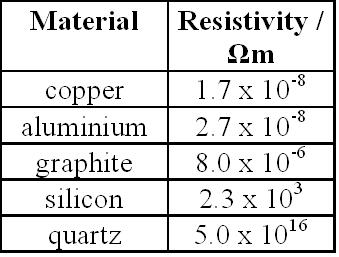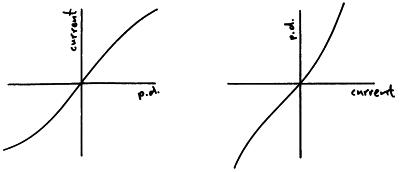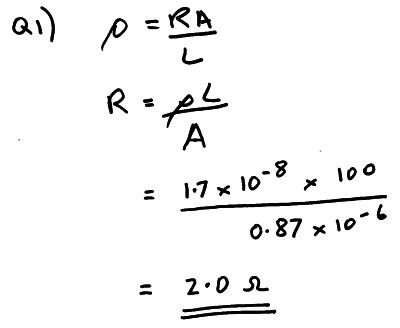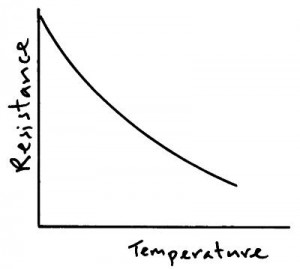The resistance of a piece of wire at a constant temperature depends on both the length of the wire and the cross-sectional area of the wire.
- the longer the wire the greater the resistance
- the greater the cross-sectional area the smaller the resistance
Resistivity (r) is a property of materials which takes account of their resistance (R), length (L) and cross-sectional area (A).
Resistivity is measured in ohm metres (W m).

- r = the resistivity of the material in Wm
- R = the resistance of the material in W
- A = cross-sectional area of the material m2
- L = length of the material in m

Resistivity and temperature
- In metals increases in temperature make the atoms in the structure of the metal vibrate more and this makes it more difficult for the electrons to move through the material, so the resistance of the material goes up. An example of this is the filament bulb.
Here the graph curves because as the filament heats it’s resistance goes up.

- in semiconducting materials the increase in temperature releases more charge carriers so the resistance of the materials goes down. An example of this is the thermistor.
The resistance of a thermistor decreases as it’s temperature increases, this is a negative temperature coefficient thermistor.
Thermistors can be used as thermostats, the thermistor is used in circuits which monitor and control the temperature of rooms, freezers & fridges etc.
Superconductivity
In some metals and alloys when the material is cooled to a critical temperature (the critical temperature varies with the material but an example of the sorts of temperatures required would be -196 oC) the resistance of the material falls to ZERO. This state of zero resistance is when the materials become superconducting.
Superconducting materials are used when very strong electromagnets are required, in MRI scanners or to reduce loses in power cables.
Example;
Q1) What is the resistance of a piece of wire which is 100 metres long, has a cross-sectional area of 0.87 x 10-6 m2 and has a resistivity of 1.7 x 10-8 Wm?







